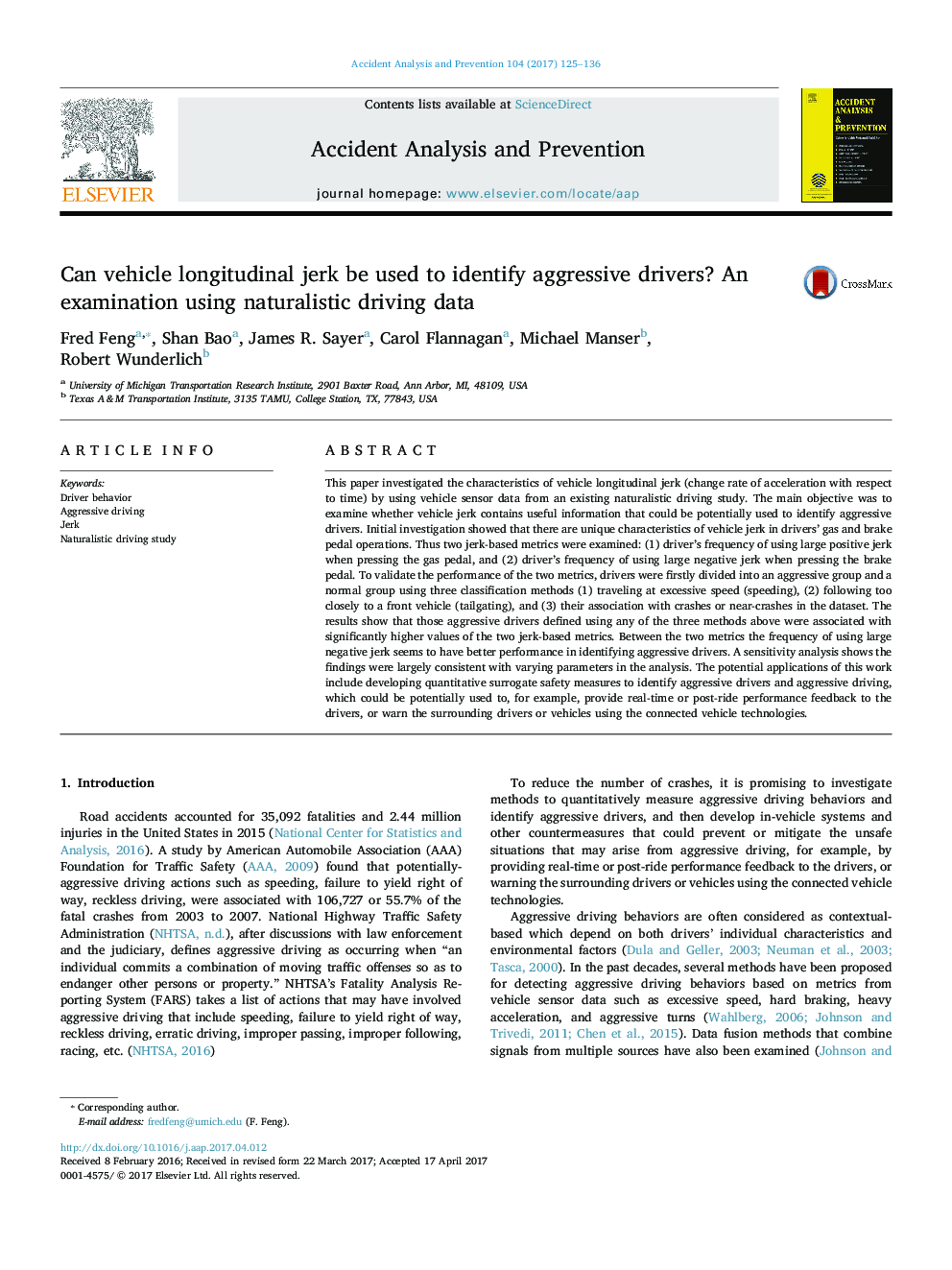| کد مقاله | کد نشریه | سال انتشار | مقاله انگلیسی | نسخه تمام متن |
|---|---|---|---|---|
| 4978628 | 1452895 | 2017 | 12 صفحه PDF | دانلود رایگان |
عنوان انگلیسی مقاله ISI
Can vehicle longitudinal jerk be used to identify aggressive drivers? An examination using naturalistic driving data
ترجمه فارسی عنوان
آیا راننده های تهاجمی می توانند از حرکت طولی خودرو استفاده کنند؟ معاینه با استفاده از داده های رانندگی طبیعی
دانلود مقاله + سفارش ترجمه
دانلود مقاله ISI انگلیسی
رایگان برای ایرانیان
کلمات کلیدی
رفتار راننده، رانندگی تهاجمی، تکان دادن مطالعه رانندگی طبیعی
موضوعات مرتبط
مهندسی و علوم پایه
مهندسی شیمی
بهداشت و امنیت شیمی
چکیده انگلیسی
This paper investigated the characteristics of vehicle longitudinal jerk (change rate of acceleration with respect to time) by using vehicle sensor data from an existing naturalistic driving study. The main objective was to examine whether vehicle jerk contains useful information that could be potentially used to identify aggressive drivers. Initial investigation showed that there are unique characteristics of vehicle jerk in drivers' gas and brake pedal operations. Thus two jerk-based metrics were examined: (1) driver's frequency of using large positive jerk when pressing the gas pedal, and (2) driver's frequency of using large negative jerk when pressing the brake pedal. To validate the performance of the two metrics, drivers were firstly divided into an aggressive group and a normal group using three classification methods (1) traveling at excessive speed (speeding), (2) following too closely to a front vehicle (tailgating), and (3) their association with crashes or near-crashes in the dataset. The results show that those aggressive drivers defined using any of the three methods above were associated with significantly higher values of the two jerk-based metrics. Between the two metrics the frequency of using large negative jerk seems to have better performance in identifying aggressive drivers. A sensitivity analysis shows the findings were largely consistent with varying parameters in the analysis. The potential applications of this work include developing quantitative surrogate safety measures to identify aggressive drivers and aggressive driving, which could be potentially used to, for example, provide real-time or post-ride performance feedback to the drivers, or warn the surrounding drivers or vehicles using the connected vehicle technologies.
ناشر
Database: Elsevier - ScienceDirect (ساینس دایرکت)
Journal: Accident Analysis & Prevention - Volume 104, July 2017, Pages 125-136
Journal: Accident Analysis & Prevention - Volume 104, July 2017, Pages 125-136
نویسندگان
Fred Feng, Shan Bao, James R. Sayer, Carol Flannagan, Michael Manser, Robert Wunderlich,
